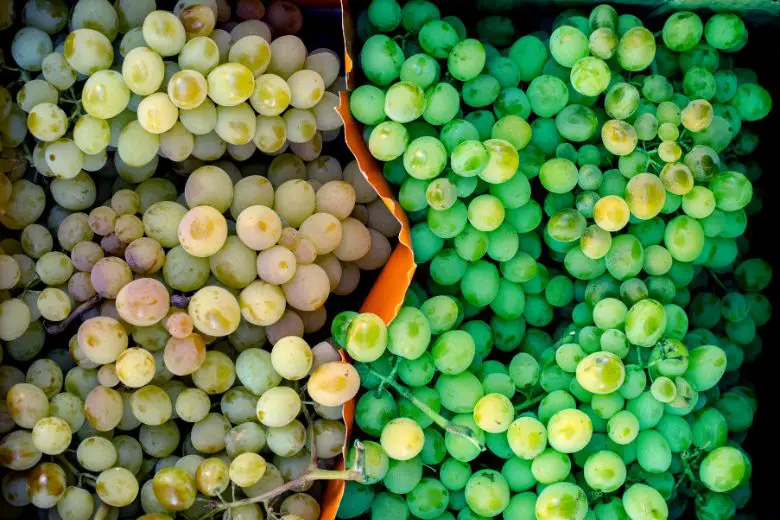Are White and Green Grapes the Same
Grapes, botanically classified as Vitis vinifera, are among the oldest cultivated fruits, dating back thousands of years. While white and green grapes may appear similar at first glance, there are noteworthy differences that extend beyond their color.
The Colorful Spectrum of Grapes
White and green grapes belong to the same family of grapes, but their colors differentiate them. White grapes are actually pale green in color, while green grapes have a slightly deeper, translucent green hue. This variation in color is primarily due to the presence or absence of certain pigments in the grape skins.
Differences in Taste and Flavor
White grapes are celebrated for their delicate sweetness and mild, slightly tangy flavor. On the other hand, green grapes tend to be crisper and more tart, with a refreshing zing that makes them a popular choice for snacking.
Nutritional Variations
Both white and green grapes offer essential vitamins and minerals, but their nutritional profiles differ. White grapes are known for their high antioxidant content and are a good source of vitamin C, potassium, and dietary fiber. Green grapes, on the other hand, contain higher levels of certain antioxidants, such as resveratrol, which is linked to various health benefits.
Skin and Texture Contrasts
The skin of a grape plays a significant role in its taste and texture. White grapes have thinner skins, making them more delicate and easy to bite into. Green grapes, with their slightly thicker skins, offer a satisfying crunch that can be quite refreshing.
Popular Varieties of White and Green Grapes
Some well-known varieties of white grapes include Thompson Seedless, Chardonnay, and Muscat. Green grapes encompass varieties like Perlette, Niagara, and Lady Finger. Each variety boasts its own unique flavor profile and uses.
Winemaking Distinctions
White and green grapes are used in winemaking to produce different types of wines. White grapes are commonly used to make white wines, known for their light and crisp characteristics. Green grapes, often referred to as “green-skinned” grapes, are used in the production of white wines as well, contributing to their vibrant flavor profiles.
Health Benefits of Both Grape Varieties
The consumption of grapes, regardless of color, has been associated with numerous health benefits. Resveratrol, found in higher concentrations in green grapes, has been linked to heart health and reduced inflammation. White grapes, rich in antioxidants, contribute to overall well-being.
Culinary Uses and Pairings
White and green grapes find their way into various culinary creations. White grapes’ subtle sweetness makes them a delightful addition to fruit salads and desserts. Green grapes’ tangy bite complements cheese platters and savory dishes.
Grapes in Cultural Symbolism
Throughout history, grapes have held cultural significance in different societies. They have been revered as symbols of abundance, fertility, and even transformation, making appearances in myths, religious texts, and rituals.
How Climate Affects Grape Color
The environment in which grapes grow plays a role in their color development. Cooler climates tend to produce grapes with higher acidity, contributing to the distinctive flavor of green grapes. Warmer climates often result in sweeter white grapes.
Growing and Harvesting Practices
The cultivation and harvesting of white and green grapes involve meticulous care. Factors such as soil type, sunlight exposure, and pruning techniques influence grape quality and characteristics.
The Role of Anthocyanins
The pigments responsible for red and purple grape colors are anthocyanins, which are absent in white and green grapes. These pigments contribute to the antioxidant properties of darker grape varieties.
Dispelling Common Misconceptions
Misconceptions about white and green grapes often arise due to their visual similarities. It’s crucial to recognize that their differences extend beyond skin deep and encompass taste, texture, and nutritional content.
Conclusion
In the colorful world of grapes, white and green varieties shine uniquely. While their colors may lead to initial confusion, their distinct tastes, textures, and nutritional benefits set them apart. Whether you’re enjoying the crisp bite of a green grape or savoring the delicate sweetness of a white grape, each variety offers a delightful experience that contributes to the rich tapestry of grape cultivation.







